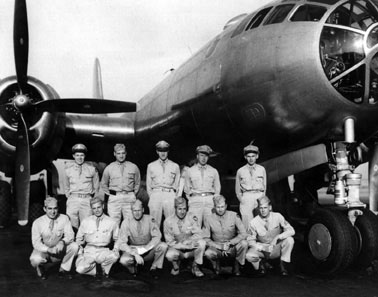|
Bail Out Over China And The Long Walk Home Introduction |
||||
|
On February 2, 1945 the eleven man crew of an F-13 (Reconnaissance version of the B-29), named Brooklyn Bessie IV, bailed out over Japanese occupied northeast China. The Aircraft Commander, Capt. Arthur Humby, kept a day-to-day diary of the subsequent thousand mile, three month walk-out to freedom. This presentation is a word-for-word copy of that diary.
The crewmembers included: Capt. Arthur J. Humby, Aircraft Commender; Lt. A. L. Double; Lt. D. C. Etling; Lt. H. K. Lovell; Lt. J. B. Morrison; Sgt. E. M. Carnicelli; J. H. Oosterhouse; R. I. Kelsey; Cpl. R. E. Tobey; Cpl. T. J. Fall, and A. Kamiak The first page or two contains some introductory material. This is necessary in order to understand the diary - which is written in short groups of words - due to the conditions and circumstances under which it was written. After the diary, there are two other sections. The first answers several key questions most often asked by individuals after they have read the diary. The second section touches very briefly on a number of interesting points that, for some reason, did not turn up in the diary. Web Site Editor Art Humby Picks Up The Story Our F-13 was one of a flight of five photo recon planes belonging to the 3rd Photo Recon Squadron. The 3rd was on its way to Saipan and Guam, in the Pacific, but we had been assigned to the 1st Photo Recon (VH) Squadron at Chengtu, China for temporary duty - after which we were to rejoin the 3rd Squadron.
Flying out of Chengtu in western China, our missions took us over Japan, Korea, Formosa (Taiwan), plus Jap held eastern China and Manchuria. On the fatal day, our mission was to photograph Port Arthur, Darien, Anchan and Mukden in Manchuria and then swing down over the full length of Korea from north to south - then back across occupied China (north of Shanghai) to our home base. End of Introduction Go to Cover — Table of Contents — Introduction Chapters — 01 — 02 — 03 — 04 — 05 — 06 — Atch. # 01 Or Go To Home - Contact Us - Cold War Hist. - 91st SRS Hist. - Stardust 40 Mission Story |
||||
